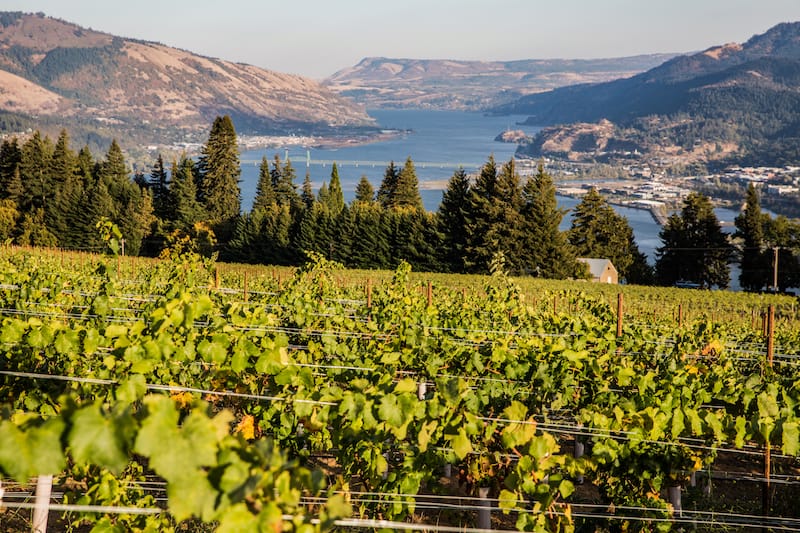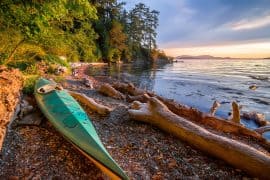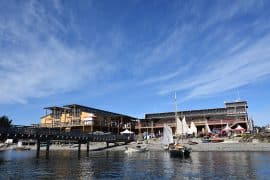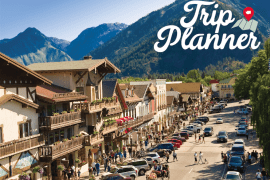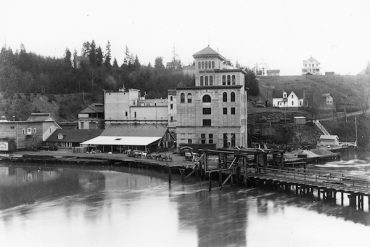written by Kevin Max
When it’s too cold for even the hardiest windsurfer or kiteboarder, the Columbia Gorge has a second act—and one far more accessible to most. Take a wool sweater, a raincoat, a small backpack for hikes, and a sense of adventure. The rest will take care of itself.
In the southwest corner of the Columbia Valley wine growing region, or AVA, lies the intersection of wind, watersports and myriad wine styles that straddle the Columbia River.

The Columbia Valley AVA is a predominantly Washington territory, dipping into Hood River and The Dalles and continuing north to the Okanogan-Wenatchee National Forest and east to Walla Walla. Draw lines straight around the globe from here and you’ll go right through the famed French wine-growing regions of Burgundy and Bordeaux. This, Washington’s largest AVA, lays claim to 17,000 planted acres and dozens of wineries.
This corner of the region produces some very good wines and great experiences in a small-batch and backroad format. We can walk into any old store and buy a bottle with no other reference than its price and pleasing taste. In many of the wineries in the Columbia Valley, you will learn the story behind the wine, the winemaker and get to the elusive “why” of each wine. Th
Morning crept in with a jacket of fog over the Columbia. A fall chill felt good as I stepped into Doppio Cafe on Hood River’s new waterfront. Summer culls windsurfers, kiteboarders and kayakersto the river. Now, all around me were signs of Hood River’s massive craft brewing industry—Pfriem, Full Sail
I drove up the Hood River Valley. The surrounding pear and apple and cherry orchards were all reminders of the Ice Age Missoula Flood, which produced such fertile and productive soil in Washington and Oregon. In this zone is Hood Crest Winery, so discreet that I almost missed it. Where the vineyard now has a proper sign forged in a shop where letters are symmetrical, it once had a hand-painted sign that said only “winery,” with such a charm that is found on other signs such as “elk jerky” or “beware of dog.” The owners and winemakers, Tess and Patrik Barr, laughed as they recalled how many visitors they received only because of the curiosity that that sign provoked.
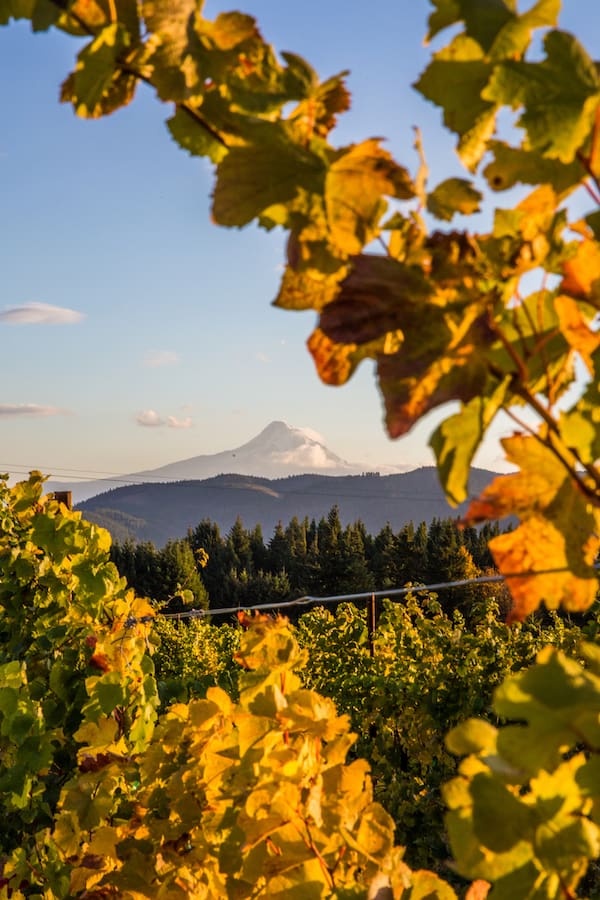
photo by Andrew Standbridge 
photo by Andrew Standbridge
The Barrs have life figured. He is handy to the point that he built a beautiful tasting room. She has the creative juices of a winemaker. They are both musicians. Together, they make wine and play music. In the corner of the indoor/outdoor tasting room and restaurant is a small stage where, on Saturdays, the blues waft over the tasting room along with the aroma of pizzas from a wood- red pizza oven. The Hood Crest
The Pines 1852 has a tasting room in Hood River and its vineyard in The Dalles. Tasting rooms are great but only show a finished product in
Some of the best stories come from getting out and wandering. So it was in the 1980s when one orchardist was walking 4 miles southwest of The Dalles and stumbled upon acres of abandoned zinfandel vines that dated back more than 100 years. Lonnie Wright, a young man from Indiana who had returned from an irrigation job in Libya, heard about this and presented himself unannounced to help revive these vines. This began Wright’s future as an orchardist and wine grower.

photo by Andrew Standbridge 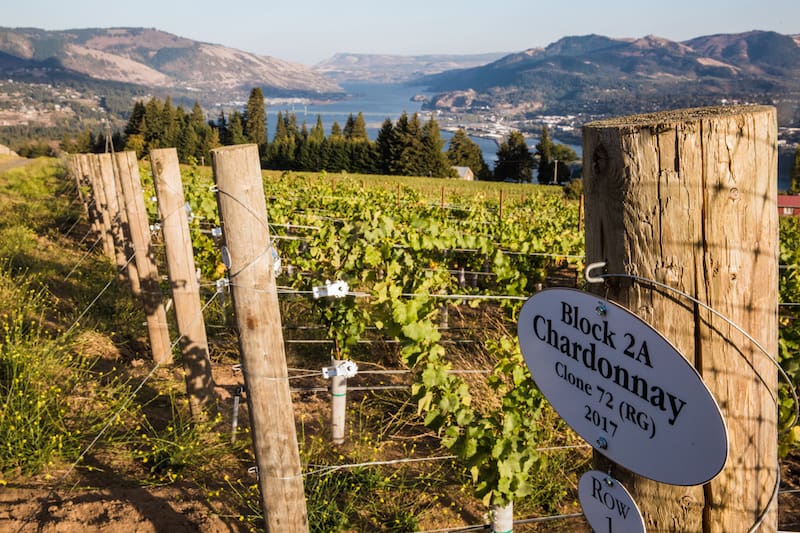
photo by Andrew Standbridge
He took me to the vineyard where these vines were discovered and where it all began for what would later become The Pines 1852. This corner of the Columbia Valley AVA also provides merlot, syrah and zinfandel grapes for some of Oregon’s biggest names in the Willamette Valley.
Wright’s farm includes an Airbnb cottage among old and handsome barns. As Wright and I swirled and sipped some of the wines from The Pines 1852 portfolio, I was happy to be in the middle of the experience and not at the polished end of the process.
Back in Hood River, I checked in to the Hood River Hotel, a historic downtown icon. It’s a place where floors creak and people quietly read books in the lobby—an oasis in time. Before dinner, I popped into Ruddy Duck to look for something in the mountain-town fashion boutique for my wife. Nothing makes the return home easier than a well-chosen gift from Ruddy Duck.
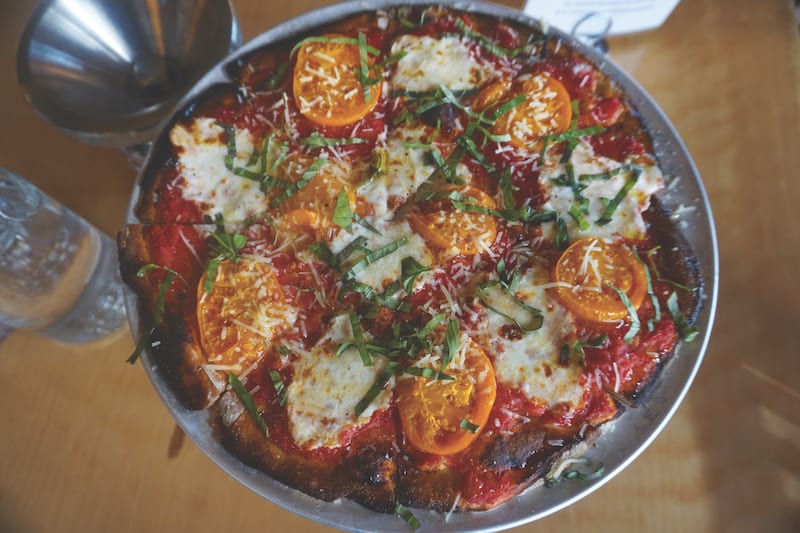
On Oak Street in downtown is Celilo, a restaurant and bar with local cuisine and the warmth created by the blond wood of an updated lodge. I came not just for the food but for the extensive wine list. French-schooled chef Ben Stenn turns local bounty into stunning Northwest cuisine. I had pappardelle with delicata squash and a cab-franc from Memaloose Winery, one of the vineyards I wouldn’t get the chance to visit.
The grapes from Memaloose span the Oregon and Washington border with blocks from Lyle, Washington
The next morning, in the pre-dawn darkness, I headed out on a run east over Hood River and circling up Highway 35 to an offshoot. It took me to a brief overlay with railroad tracks that ended in steps that surmount a giant flume—I had inadvertently found the Hood River
Before leaving the Columbia Valley AVA, I popped over the mighty Columbia River to Lyle, Washington, to meet Kelly Johnson, the owner
Johnson studied biology at Washington State University before moving to Napa Valley to learn winemaking over the next thirteen years. It was the growth of the wine industry and her experience that allowed her to return to Lyle and begin making wine with science and art. The consummate winemaker and scientist, Johnson sources grapes from around the region and turns them into sauvignon blanc, white grenache, malbec, cabernet sauvignon androsés from merlot and cabernet sauvignon and
As I rolled down the Columbia River and out of the southwest corner of the Columbia Valley AVA with a car full of great wine and experiences, I realized I had only skimmed the surface of this region that was transformed into such a fertile basket by ancient


